


Boer War Memorial
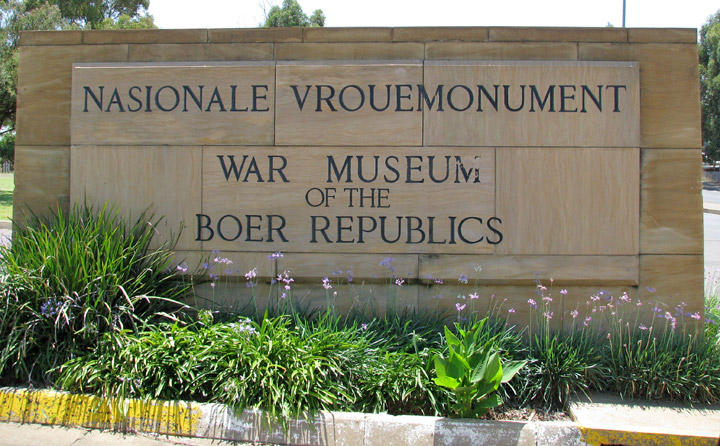
The Second Boer War (Dutch: Tweede
Boerenoorlog, Afrikaans: Tweede Vryheidsoorlog) , commonly referred to as The
Boer War and also known as the South African War (outside of South Africa), the
Anglo-Boer War (among most South Africans) and in Afrikaans as the Anglo-Boereoorlog
or Tweede Vryheidsoorlog ("Second War of Freedom"), was fought from 11 October
1899 until 31 May 1902, between the British Empire and its independent six
(6)colonies of Australia, Canada and New Zealand and the two independent Boer
republics of the Orange Free State and the South African Republic (Transvaal
Republic). The casus belli to the conflict was The Jamieson Raid, 1895-96.
After a protracted, hard-fought formal and guerrilla war, the two independent
Boer republics were annexed into the British Empire.
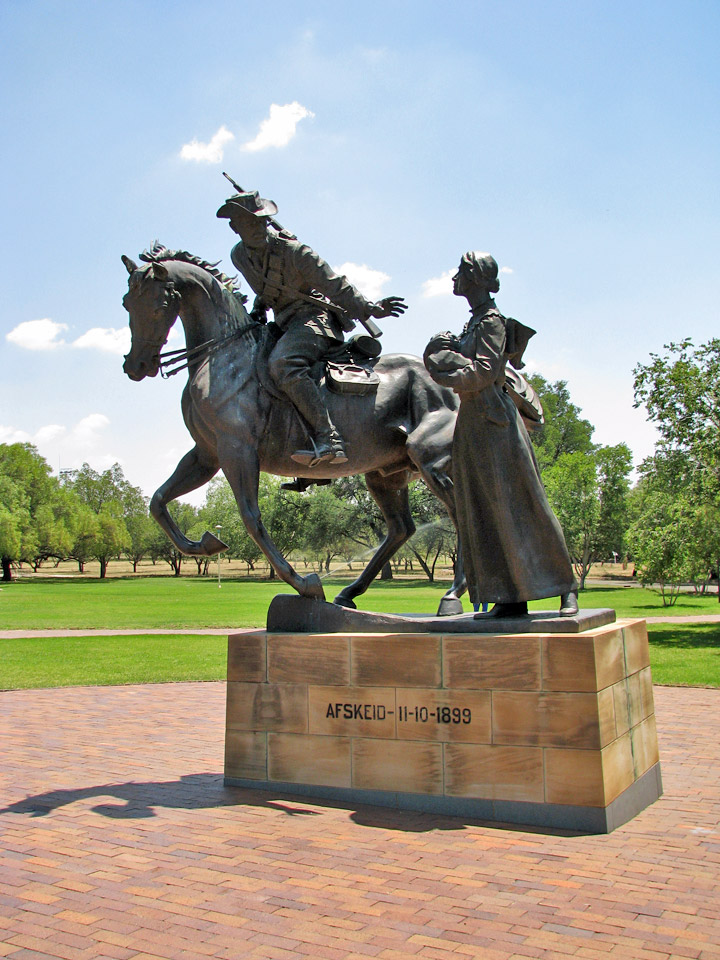
bidding the family Goodbye
The southern part of the African continent was dominated in the 19th century by
a set of epic struggles to create within it a single unified state. The British
attempt to annex the Transvaal in 1880, and the Transavaal and the Orange Free
State in 1899, was their biggest incursion into southern Africa, but there were
others. In 1868, the British annexed Basutoland in the Drakensberg Mountains
following an appeal from Moshesh, the leader of a mixed group of African
refugees from the Zulu wars, who sought British protection against the Boers. In
the 1880s, Bechuanaland (modern Botswana, located north of the Orange River)
became the object of dispute between the Germans to the west, the Boers to the
east, and Cape Colony to the south. Although Bechuanaland had no economic value,
the "Missionaries Road" passed through it towards territory farther north. After
the Germans annexed Damaraland and Namaqualand (modern Namibia) in 1884, the
British annexed Bechuanaland in 1885.
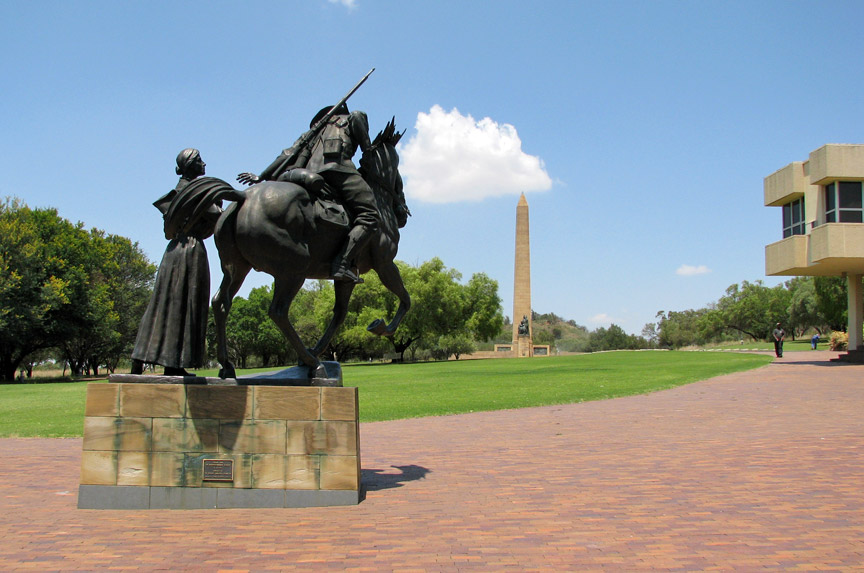
“British imperialism, which often stalked its quarry with cultural and
commercial feints before finally pulling down its prey through conquest and
formal annexation, was for some time frustrated by the presence of the two
independent Boer republics. Yet, within little more than a decade and half, the
Orange Free State and the Zuid Afrikaansche Republiek had both been subjugated
in the course of the bloody South African War of 1899–1902” [The Modernization
of the Zuid Afrikaansche Republiek: F. E. T. Krause, J. C. Smuts, and the
Struggle for the Johannesburg Public Prosecutor's Office, 1898–1899: Charles Van
Onselen]
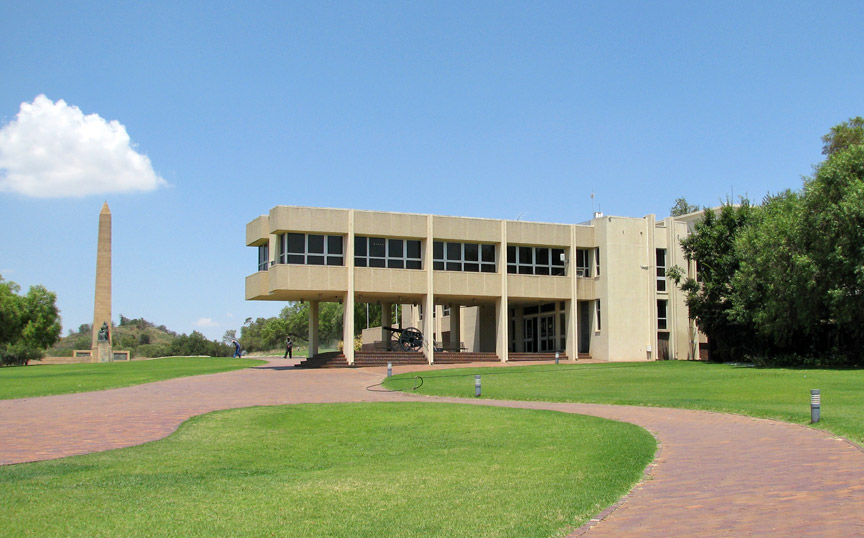
The Boers of the Transvaal Republic had in the 1880-1881 war proved skillful
fighters in resisting the British attempt at annexation, causing several costly
defeats to the British. The British government of William Gladstone had been
unwilling to become bemired in a distant war demanding of substantial troop
reinforcement and expense for what was at the time perceived to be minimal
return. They had cut their losses, and signed an armistice to end the war, with
subsequently a peace treaty with the Transvaal President Paul Kruger.
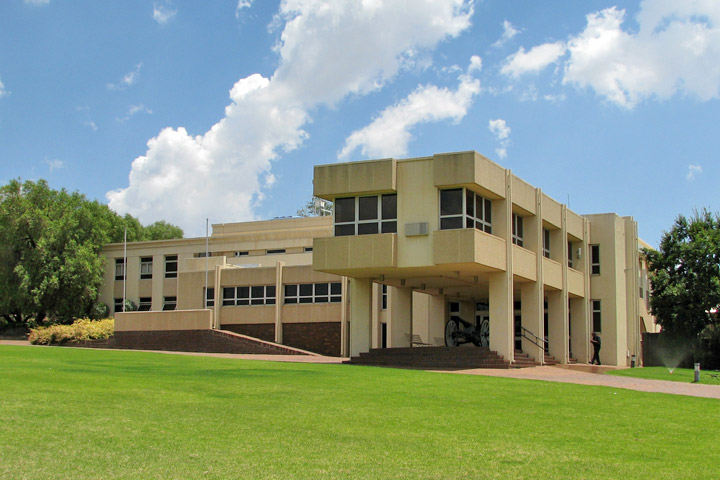
the museum
However when, in 1886, a second major mineral find was made at an outcrop on a
large ridge some thirty miles south of the Boer capital at Pretoria, it
reignited British imperial interests. By 1898 Britain was again at war with the
Boer republics in the Second Boer War, and this time the lure of gold was more
than enough for Britain to commit the substantial troops required and keep them
fighting, and bear all the cost including the loss of lives, over the three long
years that it would take.
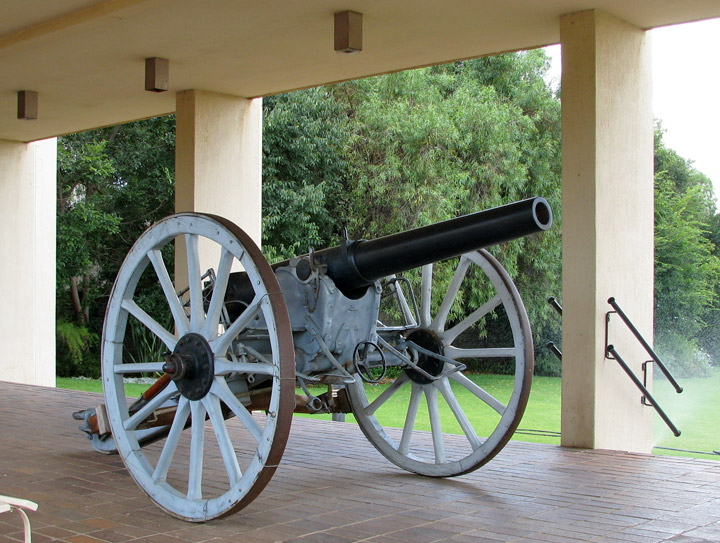
German Krupp artillery
The ridge, known locally as the "Witwatersrand" (literally "white water ridge" -
a watershed) contained the world's largest deposit of gold-bearing ore. Although
it was not as rich as gold finds in Canada and Australia, its consistency made
it especially well-suited to industrial mining methods. With the 1886 discovery
of gold in Transvaal, thousands of British and other prospectors and settlers
streamed over the border from the Cape Colony (annexed by Britain earlier) and
from across the globe. The city of Johannesburg sprang up as a shanty town
nearly overnight as the uitlanders (foreigners) poured in and settled near the
mines. The uitlanders rapidly outnumbered the Boers on the Rand, but remained a
minority in the Transvaal as a whole. The Afrikaners, nervous and resentful of
the uitlanders' presence, denied them voting rights and taxed the gold industry.
The tax on a box of dynamite was five shillings of the cost of five pounds.
These mines consumed vast quantities of explosives and President Paul Kruger
gave manufacturing monopoly rights to a non-British operation of the Nobel
company, which infuriated the British. The so-called "dynamite monopoly"
became a major pretext for war. However, one of the underlying irritants for war
occurred in 1894–95 over the railway and tariffs problems. Kruger wanted to
build a railway through Portuguese East Africa to Delagoa Bay, bypassing British
controlled ports in Natal and Cape Town and avoiding British tariffs. The
Prime Minister of the Cape Colony was Cecil Rhodes, a man with a vision of a
British controlled Africa extending from Cape to Cairo. Angered by these
problems, the Uitlanders and the British mine owners sought to overthrow the
Boer government. In 1895, Cecil Rhodes sponsored the failed coup d'état backed
by an armed incursion, the Jameson Raid. Of this raid, Jan C. Smuts wrote in
1906, "The Jameson Raid was the real declaration of war...And that is so in
spite of the four years of truce that followed...[the] aggressors consolidated
their alliance...the defenders on the other hand silently and grimly prepared
for the inevitable."

memorial to the women
Paul Kruger and the President Martinus Theunis Steyn of the Orange Free State
both understood that the failed raid was the precursor to a war and commencing
in 1896 placed orders for Mauser rifles and German Krupp artillery.
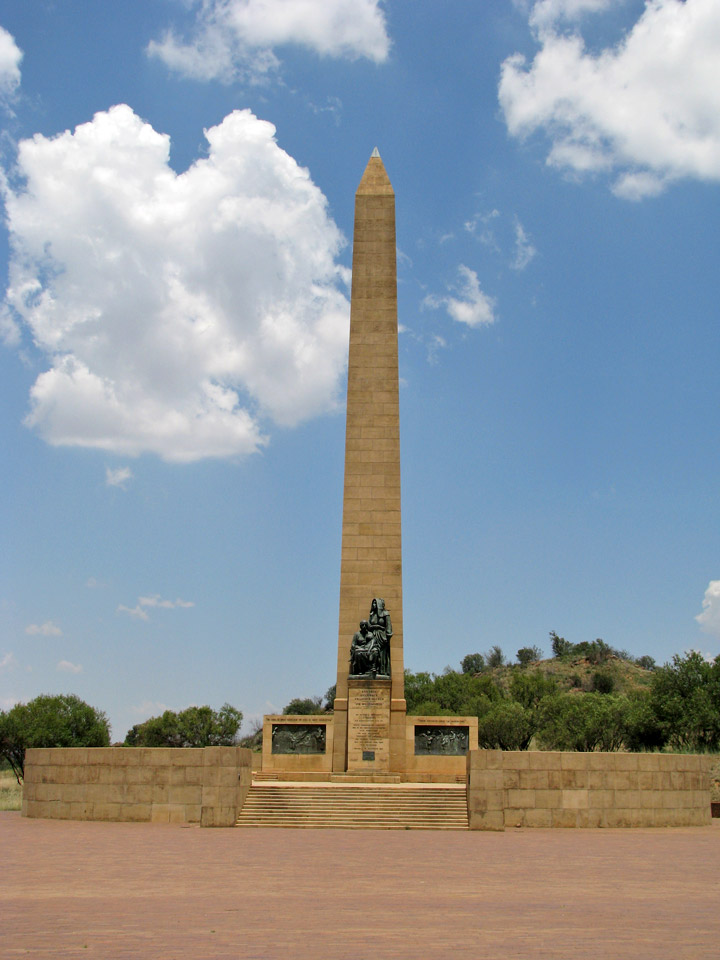
The failure to gain improved rights for Britons became a pretext to manufacture
a case for war and to justify a major military buildup in the Cape. The case for
war was justified and espoused as far away as the Australian colonies.
Several key British colonial leaders favored annexation of the independent Boer
republics. These figures included the Cape Colony governor Sir Alfred Milner,
Cape Prime Minister Cecil Rhodes, British Colonial Secretary Joseph Chamberlain
and mining syndicate owners or Randlords (nicknamed the gold bugs) such as
Alfred Beit, Barney Barnato and Lionel Phillips. Confident that the Boers would
be quickly defeated, they planned, schemed and organised to precipitate a war,
based on the Uitlanders' real or imagined grievances.
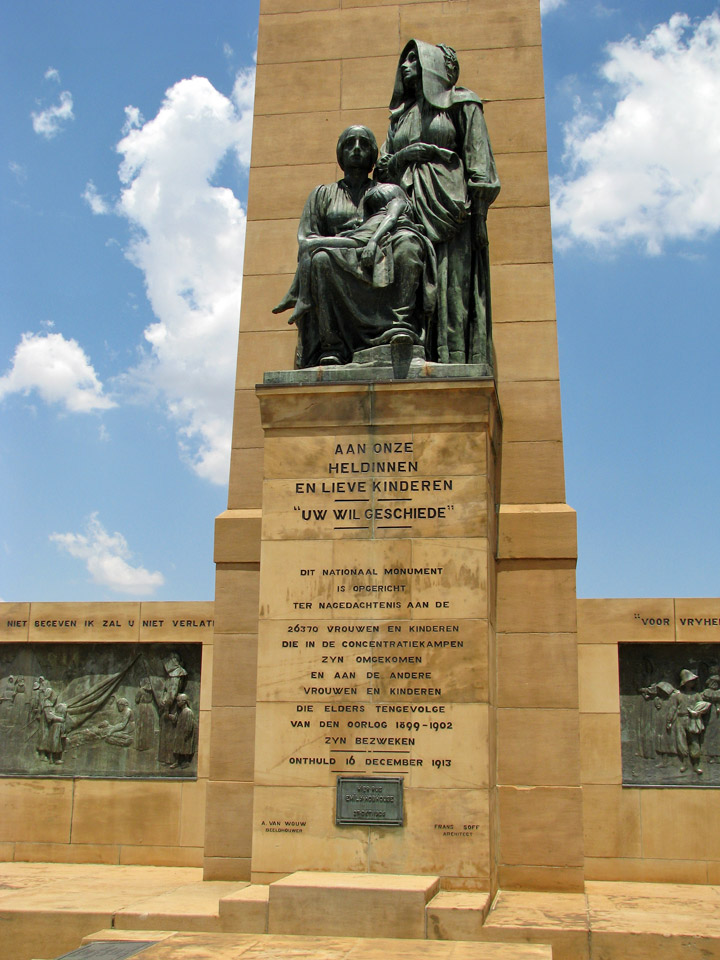
President Steyn of the Orange Free State invited Milner and Kruger to attend a
conference in Bloemfontein which started on 30 May 1899, but negotiations
quickly broke down, despite Kruger's offer of concessions. In September 1899,
Chamberlain sent an ultimatum demanding full equality for British citizens
resident in Transvaal.
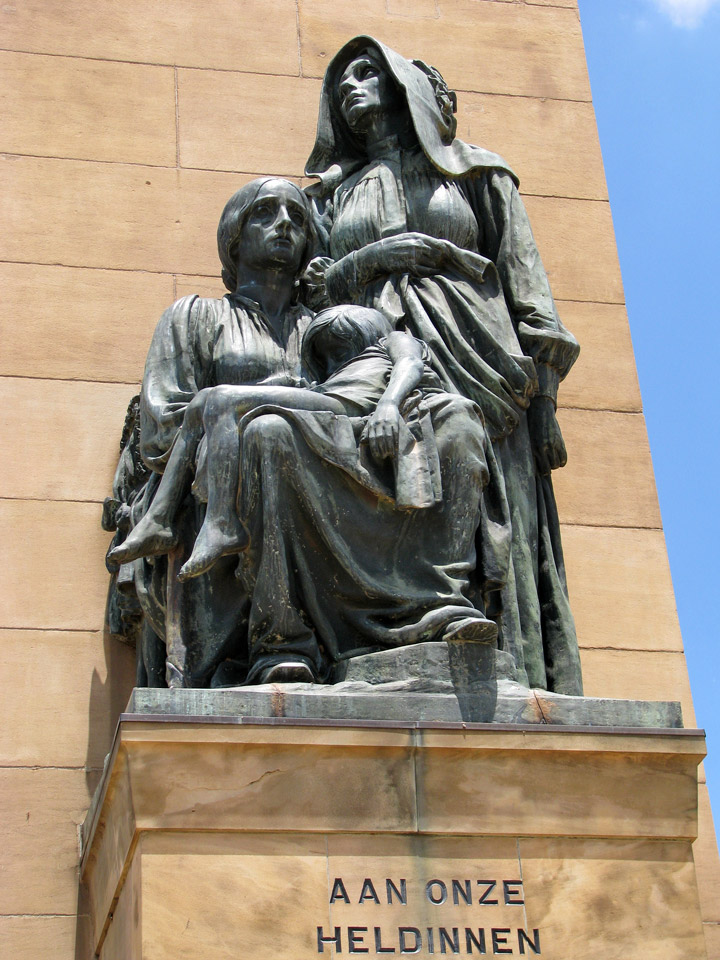
Kruger, seeing that war was inevitable, simultaneously issued his own ultimatum
prior to receiving Chamberlain's. This gave the British 48 hours to withdraw all
their troops from the border of Transvaal; otherwise the Transvaal, allied with
the Orange Free State, would declare war.
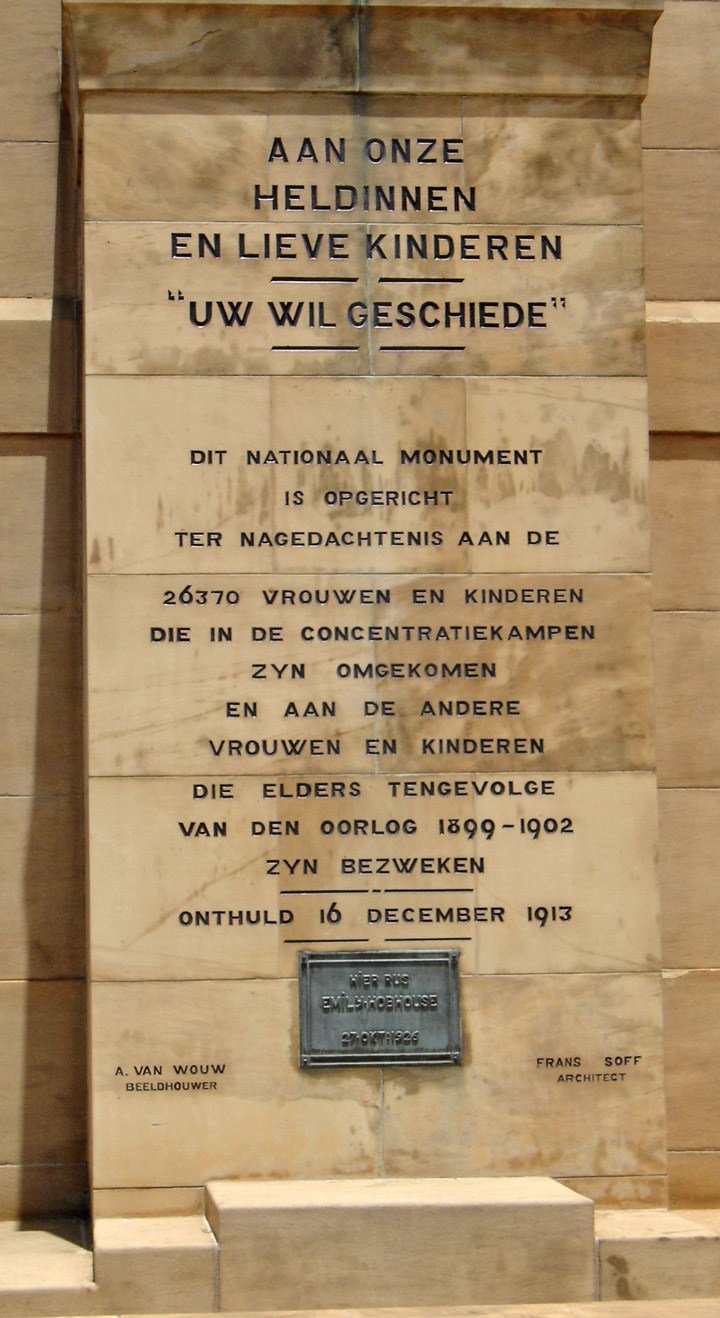
News of the ultimatum reached London on the day it expired. Outrage and laughter
were the main responses. The editor of the Times laughed out loud when he read
it, saying 'an official document is seldom amusing and useful yet this was
both'. The Times denounced the ultimatum as an 'extravagant farce', The Globe
denounced this 'trumpery little state'. Most editorials were similar to the
Daily Telegraph, which declared: 'of course there can only be one answer to this
grotesque challenge. Kruger has asked for war and war he must have!'.
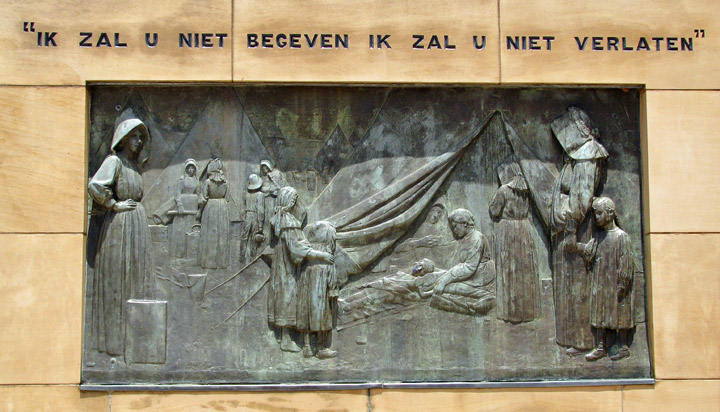
War was declared on 11 October 1899. The Boers had no problems with mobilization,
since the Presidents of the Transvaal and Orange Free State simply signed
decrees to concentrate within a week and the Commandos could muster between
30-40,000 men. The Boers struck first by invading Cape Colony and Natal
between October 1899 and January 1900. What the Boers presented was a mobile and
innovative approach to warfare that had first appeared in the American Civil
War. The average Burghers who made up their Commandos were farmers who had spent
almost all their working life in the saddle, and because they had to depend on
both their horse and their rifle they were skilled stalkers and marksmen, and
became expert light cavalry. They could make use of every scrap of cover, from
which they could pour in a destructive fire using their modern Mausers. They
also had around one hundred of the latest Krupp field guns, all horse drawn and
dispersed among the various Commando groups, and their skill in adapting
themselves to first-rate artillerymen shows them to have been a versatile
adversary.
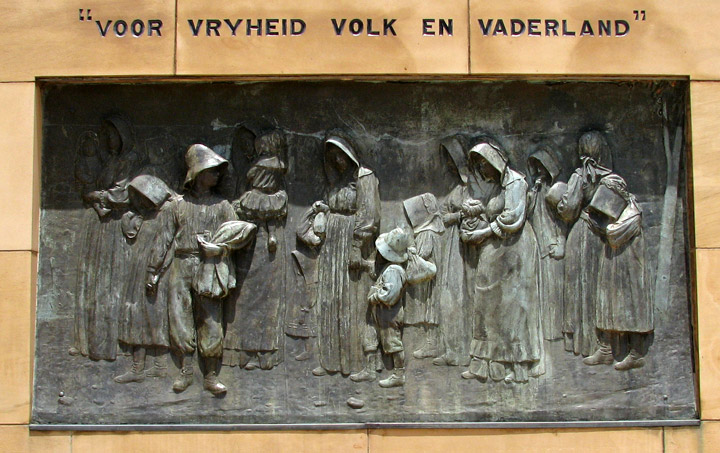
Although it seemed as though the Boer War would be a quick and easy victory, it
became clear that Britain would have problems with it from the start; over 2/3
of the men that attempted to enlist were turned away because they were medically
unfit. This staggering number had a great influence on the Liberal Welfare
Reforms of 1906-14, after the Conservatives had been voted out of power.
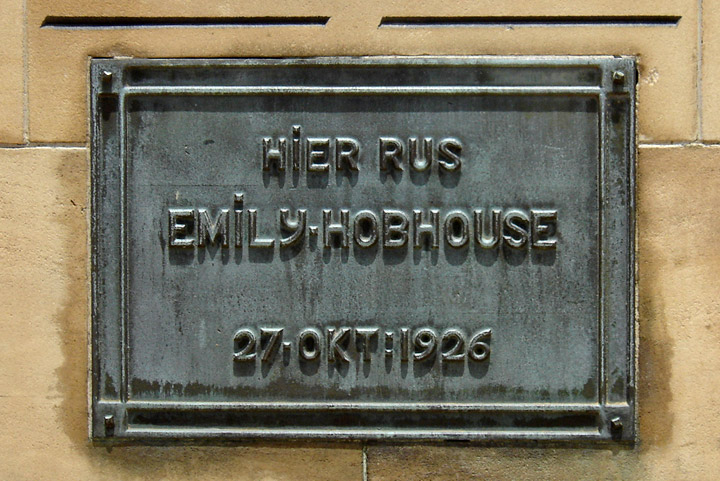
Emily Hobhouse was born on 9 April, 1860. She was
raised in the tiny village of St. Ive near Liskeard in East Cornwall.
Her father was rector of the Anglican Church while her mother was the
daughter of Sir William Trelawney who represented East Cornwall in
parliament. After her mother’s death Emily took care of her father who
was often unwell. After his death in January 1895 she left for the
United States where she did welfare work among the many Cornish
emigrants working in the mines in Minnesota. She became engaged to John
Carr Jackson but broke off her engagement in 1898 and returned to
England. When the war with South Africa broke out in October 1899,
Leonard Courtney, a liberal MP, invited Emily to join the women’s branch
of South African Conciliation Committee of which he was president. In
July 1900 she learnt about the plight of the Boer women in war torn
South Africa. She now started the South African Women and Children’s
Distress fund. She also learnt about the existence of a camp for women
in Port Elizabeth. She sailed for South Africa on 7 December 1900 and
landed at Cape Town on the 27th. Here she learnt of camps in
Johannesburg, Bloemfontein, Potchefstroom, Norvalspont, Kroonstad, Irene
etc. She immediately applied for permission to visit the concentration
camps.
Her chances of visiting the camps were not good as martial law had
been declared over large parts of the Cape Colony. Lord Milner agreed
that she could visit the camps, subject to the approval of Lord
Kitchener. He granted her permission to proceed only as far as
Bloemfontein. She left Cape Town on 22 January 1901 and arrived at
Bloemfontein on the 24th where she stayed at the home of the Fichardt
family. The camp was "dumped down" as Emily put it, “on the southern
slope of a kopje (small hill) right out on the bare brown veld." When
she arrived in the camp she finally met the women she had come to help.
There were then almost two thousand people living in the camp: the
majority was women and children with a few surrendered men known as
“hands-uppers." She had come with the object of providing such articles
as could not be expected to be provided for by the authorities, "but I
soon found out", she wrote, and “that there was a scarcity of essential
provisions. The accommodation was wholly inadequate. When the eight, ten
or twelve people who lived in the bell tent were squeezed into it to
find shelter against the heat of the sun, the dust or the rain, there
was no room to stir and the air in the tent was beyond description, even
though the flaps were rolled up properly and fastened. Soap was an
article that was not dispensed. The water supply was inadequate. No
bedstead or mattress was procurable. Fuel was scarce and had to be
collected from the green bushes on the slopes of the kopjes by the
people themselves. The rations were extremely meagre and when, as I
frequently experienced, the actual quantity dispensed fell short of the
amount prescribed, it simply meant famine." Sicknesses such as measles,
bronchitis, pneumonia, dysentery and typhoid had already invaded the
camp with fatal results. There were very few tents who did not house one
or more sick persons, most of them children.
When she requested soap for the people, she was told that soap was a
luxury. She nevertheless succeeded in having it listed as a necessity.
She was aware of the difficulties involved in obtaining supplies from
the coast on a railway line constantly threatened and disrupted, but she
could not forgive what she called :"Crass male ignorance, helplessness
and muddling… I rub as much salt into the sore places in their minds…
because it is good for them; but I can’t help melting a little when they
...confess that the whole thing is a grievous and gigantic blunder and
present almost insoluble problems...”
She also visited the camps at Norvalspont, Aliwal North,
Springfontein, Kimberley and Orange River and Mafeking. Everywhere she
directed the attention of the authorities to the inadequate sanitary
measures, meagre rations, and to inefficient organization. When she
returned to Bloemfontein the military operations of March and April had
brought a large number of extra families into the camp .She wrote that
the population had redoubled and had swallowed up the results of
improvements that had been effected. The appalling increase in illness
and death and the fact that nobody in authority listened to her pleas,
led to a decision to return to England. She hoped that once back in
Britain she would be able to persuade the Government and the public to
make an end to the conditions of misery and distress in the camps.
At the request of the Minister of War, St John Brodrick, she
submitted her report on the camps to him in writing. Her report was also
made known to the public by the committee of the Emergency Fund. It
directed the attention of the public to the concentration camps and
created a deep feeling of sympathy in all parts of the country but the
debate on the report in the Houses of Parliament, was extremely
disappointing as it was a picture of “apathy and impatience.” In spite
of fierce opposition from newspapers supporting the Government’s
standpoint Emily continued to address meetings about the plight of the
women and children. The Government appointed a ladies' committee under
Mrs. Millicent Fawcett to inspect the camps in South Africa. Hobhouse
was not part of this committee. The committee’s report however repeated
her findings and resulted in important improvements.
In October 1901 she decided to resume her work in South Africa. She
steamed into Table Bay on 27 October 1901 but was not allowed to land.
Five days later she was deported. The disappointment caused by her
reception came as a great shock to her. She retired to the south of
France to work on her first book “The Brunt of the War and where it
fell”.
When the war ended in 1902 she saw it as her mission to support every
effort aimed at rehabilitation and reconciliation of the war ravaged
country. With this objective in view, she visited South Africa once more
in 1903. Back in England she finalized her plan, conceived during her
visit, of starting Boer home industries. She, accompanied by two
helpers, returned to South Africa in 1905. They came equipped with the
required apparatus to teach the women and girls the art of spinning and
weaving. The first school was set up at Philippolis in the Free State.
Eventually 27 schools were established in the Transvaal and the Free
State. A lace school was also established at Koppies in the Free State.
The unveiling of the Women's Monument at Bloemfontein took place on
16 December 1913. Emily Hobhouse was asked to unveil the monument but
eventually her ill health prevented her from completing her journey and
personally delivering her speech. On the initiative of Mrs. Steyn, a sum
of £2,300 was collected for her in 1921 with which she purchased a house
at St. Ives in Cornwall. She died on 8 June 1926. Her ashes found a
final resting place in a niche at the Women’s Memorial at Bloemfontein
on 26 October 1926.

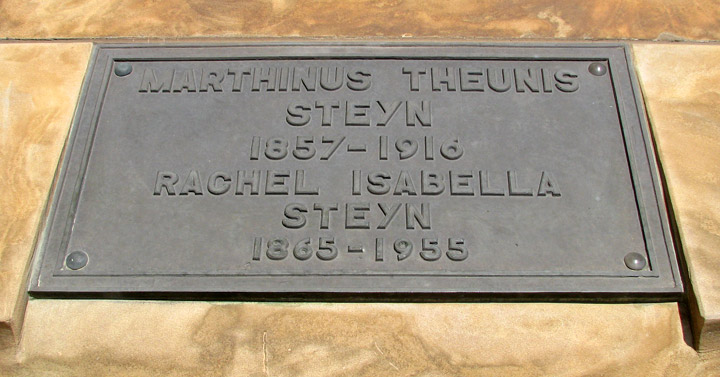
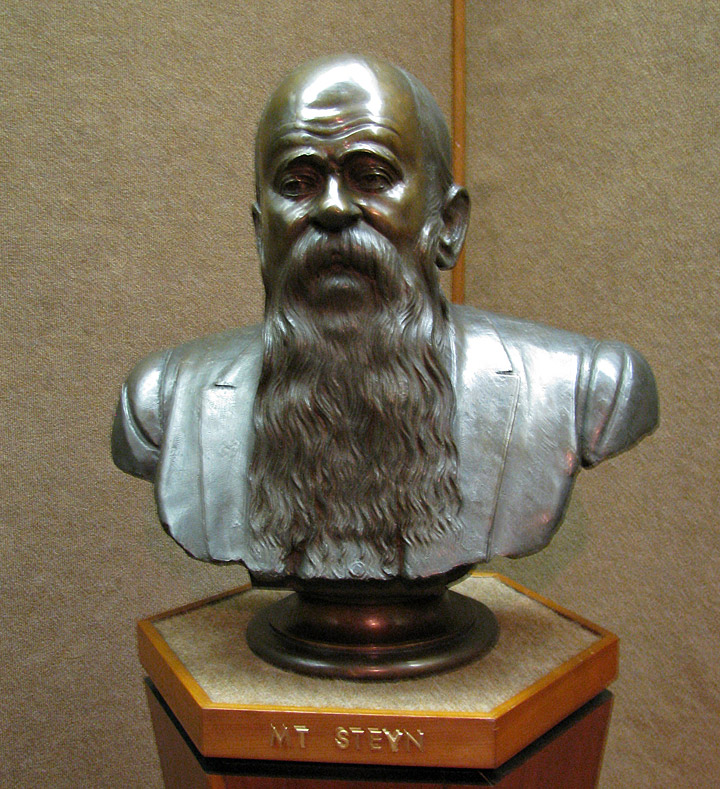
Marthinus Theunis Steyn was born at Rietfontein,
Winburg on 2 October 1877 and died at Bloemfontein on 28 November 1916.
His father was Marthinus Steyn and his mother Cecilia Wessels. He
first attended a farm school and then went to Grey College,
Bloemfontein. At the suggestion of Judge James Buchanan he continued his
education at Deventer in the Netherlands. Before sitting for the
admission examination to the University of Leyden he decided on legal
training at the Inner Temple in London, where he was admitted early in
the 1880's. In 1882 he was called to the bar. He now returned to Free
State and soon had a flourishing practice in Bloemfontein. On 10 March
1887 he married Rachel Isabella (Tibbie) Fraser. His public career began
in 1889 with his appointment as Attorney-General. He rose rapidly
through the ranks and on 5 May 1892 he was promoted to first criminal
judge.
When FW Reitz resigned as president in 1895 Steyn seemed to be the
obvious choice for the succession. J.G. Fraser, the other candidate
opposed closer cooperation with the South African Republic (ZAR), while
Steyn supported it. The Jameson Raid put the result beyond any doubt.
Steyn won and was sworn in as president on 4 March 1896. Although he was
just 39 years old his decisions and the naturalness with which he
adapted to his high position bore testimony to an already mature
attitude to life. He also displayed a strong sense of mission and duty.
Closer cooperation with the South African Republic did not exclude
cooperation with the rest of South Africa. Steyn believed that, after
the Jameson Raid, political feeling in the Cape Colony supported the
republics. Sir Alfred Milner, the new British High Commissioner soon
challenged this relationship as he was an ardent imperialist. From 1896
onwards he was busy with the strengthening of the loyalty and political
cohesion of the English-speaking South Africans and to channeling
Uitlander discontent and opposition to Kruger's government. Steyn,
however, considered British imperialism a danger to the independence of
the Orange Free State. At a conference in Bloemfontein in March 1897,
attended by Pres Kruger, Steyn proposed that they should extend the
political alliance of 1889 by adding a clause to the effect that the two
governments would consult with each other on all matters that could lead
to war with Great Britain.
Steyn attempted to persuade the Transvaal government to become more
flexible in their policies regarding Uitlander franchise and the
dynamite monopoly. In 1899 the situation came to a head when Milner
broke off talks with Kruger about the franchise question during the
Bloemfontein Conference (31 May-5 June 1899) - a meeting instigated by
Steyn. War was now clearly imminent. On 27 September 1899 he presented
to the Free State Volksraad a clear and final report on the negotiations
and concluded that he would rather lose the independence of the Free
State with honour.
During the first months of the war he solved innumerable problems and
visited the commandos to encourage his burghers. After the catastrophic
surrender of general Piet Cronje at Paardeberg Steyn called on the
demoralised burghers to make a determined stand: first at Poplar Grove
(07/03/1900) and then at Abrahamskraal (10/03/1900) but without success.
On 13 March Lord Roberts entered Bloemfontein. Steyn and the
government had left Bloemfontein on the 12th. At Kroonstad Steyn was
chairman of a joint Council of War where Kruger and General Piet Joubert
were also present. Here they decided to abolish wagons and to employ
mounted commandos in future thus giving the Boers increased mobility.
The OFS government now had to fall back repeatedly before the advance
of Lord Roberts. When Bethlehem fell into British hands on 7 July the
seat of the government was “in the field.” Steyn and his executive
council now remained with De Wet throughout the war.
Steyn often had to intervene when Transvaal wished to open
negotiations with the British. In May 1900 he went to Pretoria to
encourage a dejected president Kruger. When peace negotiations were
mentioned Steyn remained adamant that the war was to continue. At
Senekal a deeply upset Steyn heard about Botha’s negotiations with
Kitchener at Middelburg (28/02/1901). Although nothing came of this, it
was a clear indication that Transvaal’s resolve to continue with the war
was again wavering. Steyn met with the Transvaal government at Klipdrif
near Vrede and they decided to continue with the struggle. After being
informed of another round of negotiation between the ZAR and Kitchener
in May 1901 he forcefully protested that the OFS had not been consulted
about the meeting with the Transvalers at Waterval.
On 31 October 1900 he rejoined De Wet in the Western Transvaal. and
returned with him to the Orange Free State. Near Bothaville they almost
fell into the enemy’s hands. In December Steyn accompanied De Wet during
his first unsuccessful attempt to invade the Cape Colony. He also
accompanied De Wet during his second abortive attempt to invade the Cape
Colony in 10 February 1901.
When his term of office expired he insisted that they should hold a
presidential election. Steyn was the only candidate and at Doornberg
they solemnly administered the oath of office and reconstituted the
executive council.
On 11 July 1901, Steyn, through the efforts of Ruiter, his personal
servant, managed to evade capture at Reitz. His bodyguard and the
members of his government however were captured and he had to
reconstitute his cabinet.
Steyn’s official replies to British proclamations were legally
well-reasoned, and were worded in a way that encouraged the burghers. On
19 March 1900 the President delivered his answer to Roberts’s annexation
of the Free State. In this he solemnly declared that the republic of the
Free State still existed, despite the so-called annexation. On 7 August
1901 there was another one of Kitchener’s threatening proclamations in
which all who did not surrender before 15 September were threatened with
banishment and confiscation of property. In Steyn’s reply of 15 August
he pointed out to Kitchener his inadmissible methods of warfare.
After a few Republican victories towards the end of 1901, e.g.
Tafelkop (20 December) and Groenkop (25 December) Steyn joined the
commando of General de la Rey at Doornspruit in March 1902 to consult Dr
von Rennenkampf about his eyes, which showed the first symptoms of the
serious disease that subsequently afflicted him. Here Acting President
Schalk Burger informed him that the first steps towards final
negotiations for peace were under way. On 9 April 1902 the governments
of the two republics met at Klerksdorp. Although his legs were already
semi-paralysed, his will remained indomitable. His only condition for
peace was the retention of independence. When the governments met
Kitchener on 12 April at Pretoria it was decided to summon
representatives of the burghers in the field, because only the people,
according to the constitutions of the republics, could decide the
question of their independence. Kitchener was extremely impressed by
Steyn and said of him: “He is head and shoulders above the others, and
has great influence.” On 15 May, when he arrived at Vereeniging he was
almost totally paralysed. He only attended two meetings but Rev J.D.
Kestell and his generals kept him informed and consulted him regularly.
On 29 May, he left for Kroonstad where medical attention was available.
He resigned as president and was thus spared the bitterness of signing
the treaty of Vereeniging. By the time his wife joined him on 11 June
1902 he was completely helpless. With the financial aid of friends they
left for Europe to seek medical aid for his condition. For the next
three years Prof. C. Winkler and various other physicians treated Steyn.
In 1903 he had recovered sufficiently to return home where they settled
at Onze Rust.
He welcomed self-government in 1907 as the movement for a united
South Africa was very dear to him. Steyn was to serve as one of the Free
State delegates at the National Convention at Durban in October/November
1908, where he was elected vice-chairman. He exercised great influence
both in and out of the conference hall. He was a candidate for the
premiership but because of health reasons he declined and retired to his
farm. He, however, was not aloof from national affairs. His door was
always open and friends and leaders often sought his advice.
On 16 December 1913 the National Women’s Memorial for which he, more
than anyone else, had worked, was unveiled in Bloemfontein. On 28
November 1916 he died suddenly while addressing the Oranje
Vrouevereniging in the Memorial Hall in Bloemfontein. He is buried at
the foot of the Women’s Memorial.
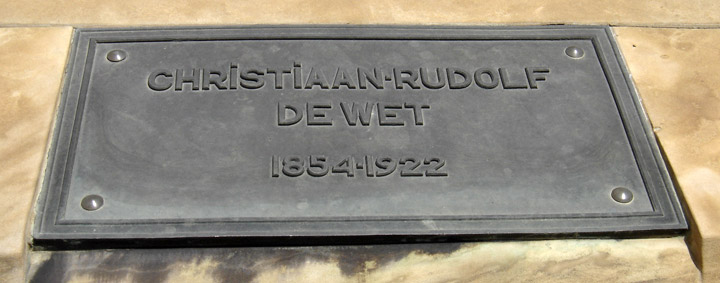
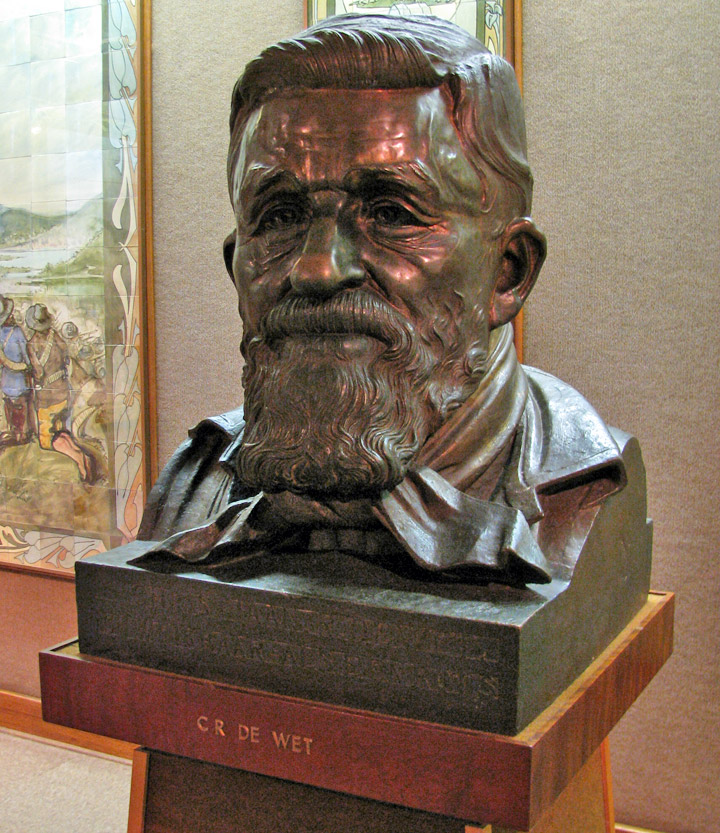
Christiaan Rudolph de Wet was born at Leeukop in the
Smithfield district on 7 October 1854 and died at Klipfontein, Dewetsdorp on 3
February, 1922.
His father Jacobus de Wet was married to Aletta Strydom. In 1854 they settled
in the Smithfield district where Christiaan was born. As a child he received
very little formal education. In 1873 he married Cornelia Kruger. When Transvaal
was annexed in 1877 they moved to the Vredefort district, to be on the spot in
case of hostilities. He again changed farms before settling in the district of
Heidelberg (ZAR) in 1880. When war broke out in 1881 between the ZAR and Britain
he took part in the battles of Laingsnek, Ingogo and Majuba.
After farming in various districts of the ZAR he returned to the Free State
and purchased Nieuwejaarsfontein, formerly his father’s farm. In 1896 he moved
to the farm Rooipoort in the Heilbron district. He was elected to the Free State
Volksraad in 1889 – a position he held until 1898.
In September 1899 he acquired his famous grey Arab, Fleur. With the onset of
war De Wet left for the front as an ordinary burgher of the Heilbron command
under Lucas Steenkamp. When Steenkamp fell ill De Wet was elected acting
commandant. At the battle of Nicholson’s Nek (30/10/1899) he managed to drive
the British troops from their positions with only 300 men.
In December 1899 President Steyn appointed De Wet as field-general under
General PA Cronje on the western front. De Wet and General J.H. de la Rey tried
in vain to persuade Cronje to go on the offensive. Cronje was finally pinned
down by Lord Roberts’s forces at Paardeberg. De Wet, however, managed to avoid
being caught up in this debacle. Although he managed to help Commandants J.
Potgieter and C.C.Froneman to break out from the trap, his attempt to free
Cronje failed. Cronje surrendered on 27 February 1900. Steyn now entrusted the
command of the Free State commandos to De Wet. On 7 March 1900 he tried in vain
to check the British advance on Bloemfontein at Poplar Grove. A further attempt
at Abrahamskraal (Driefontein) on the 10th also failed and on the 13th Roberts
occupied Bloemfontein.
De Wet now disbanded the commandos, with orders to reassemble at the Sand
River on 25 March. A new spirit prevailed among the burghers when they
reassembled. They were also informed that cowards and deserters would be
strictly disciplined. In accordance with the resolution passed at the council of
war at Kroonstad (17/03/1900) De Wet urged the burghers to get rid of their
wagons as this seriously impeded their progress. From now on he planned and
carried out his operations with complete secrecy. Treachery and lack of
discipline were greater obstacles to him than the enemy’s superior force. He was
a strict taskmaster, demanding total dedication from his burghers. Although he
was not always too popular, his unerring certainty when summing up a situation
and issuing commands and his uncanny sense of timing and direction, combined
with his many successes ensured his men’s complete confidence and support.
On 31 March 1900 De Wet dealt the British a severe blow when he defeated
Brigadier-General R.G. Broadwood's forces at Sannaspos near Bloemfontein. After
the railway bridge across the Vaal River had been damaged, huge stores of
provisions, destined for the British army, accumulated at Roodewal station. De
Wet launched a direct attack on the station on 7 June 1900 where he managed to
capture supplies worth £ 500 000.
To counter De Wet’s operations the British army assembled more than 15 000
men and marched on Bethlehem where De Wet put up a gallant defence. He had to
retreat to the Brandwater Basin as the odds were too great. On 15 July De Wet,
Steyn and the government managed to escape unscathed from the trap set by the
British generals in the Brandswater Basin. General Michael Prinsloo was not as
fortunate and had to surrender with 3500 burghers on 30 July 1900
Roberts concluded that he can probably end the war if he succeeded in
capturing De Wet. He now initiated a large scale operation known as the “First
De Wet Hunt.” About 50 000 men were soon on the trail of the ever elusive Boer
general who crossed into Transvaal, and succeeded in shaking of his pursuers by
crossing the Magaliesberg at Olifantsnek on 14 August 1900.
After a thorough reorganisation of the Boer forces burghers who had taken the
oath of neutrality were called up again. De Wet headed the drive in the Free
State and through his efforts and encouragement many a Freestater rejoined the
commandos. For De Wet the adoption of guerrilla tactics heralded a period of
reverses e. g at Frederickstad (20-25 October 1900) and Doornkraal (6 /11/1900)
near Bothaville.
To relieve the pressure on the Eastern Free State De Wet invaded the Cape
Colony. Three columns under General CE Knox took part in the second De Wet hunt.
Heavy rains and a flooded Orange River thwarted Wet’s plans. He managed to evade
capture and on 14 December he broke through the British lines near Thaba Nchu.
At the end of January 1901 he again attempted to invade the Cape Colony.
Seventeen flying columns (14 000 troops) now took part in the third De Wet hunt.
De Wet finally crossed the Orange on 10 February 1901 but the lack of horses and
torrential rain frustrated his plans. On 28 February he returned to the Free
State. This second invasion was a dismal failure as he lost the strategic
initiative and from then on he would be largely committed to defensive warfare.
To bring the war to an end Kitchener had a formidable line of blockhouses
built and he started flushing out the Boers in a series of systematic drives.
Even these measures proved ineffective against De Wet as he broke through the
lines at will. Shortly after inflicting heavy losses on the British forces at
Groenkop (25/12/1901) he managed to evade one extensive drive only to be caught
up in another. Again he managed to escape.
During March 1902 he operated in the western Free State, but the end was in
sight. The scorched earth policy and the plight of the women and children in the
concentration camps brought the Boers to the negotiation table. Although De Wet
was still prepared to carry on with the relentless struggle it was clear that
most of the delegates at Vereeniging were opposed to prolonging the war. De Wet
signed the peace treaty in his capacity as acting president of the Free State
(29-31 May 1902) as Steyn was by then too ill. He then visited the commandos to
persuade them to lay down their arms. In July 1902 De Wet, J.H. de la Rey and
Louis Botha left for Europe where they raised funds for the reconstruction of
the country. While on board the Saxon he wrote his wartime reminiscences" De
Strijd tusschen Boer en Brit" (1902), aided by Rev JD Kestell.
Back in South Africa De Wet was a founder member of the Orangia Unie. He was
Minister of Agriculture after the Orange River Colony was granted
self-government. In 1910 De Wet retired from politics and settled on his farm,
Allanvale, near Memel.
When the First World War started in 1914 De Wet was against Botha’s attack of
German South West Africa. The situation was aggravated when Martial Law was
declared and men were called up from all over the country. This created the
impression that the Government had departed from its undertaking to use only
volunteers. De Wet now favoured a form of armed protest which became a reality
when the government started with the commandeering of burghers. During a
skirmish at Doornberg (8/11/1914 his son Danie and several other rebels were
killed. De Wet evaded his pursuers and was finally captured at Waterbury near
Vryburg on 30 November 1914. He was held in the Johannesburg Fort. Six months
later he was found guilty on a charge of high treason and sentenced to six
years’ imprisonment and a fine of £2000 which was soon paid from voluntary
contributions. In response to representations made by several influential people
the Government granted him a reprieve and he returned to Allanvale on parole.
He sold Allanvale and after settling for a few years near Edenburg, he
returned to the Dewetsdorp district where he settled on Klipfontein. He died on
23 February 1922 and was laid to rest at the foot of the Women’s Memorial.
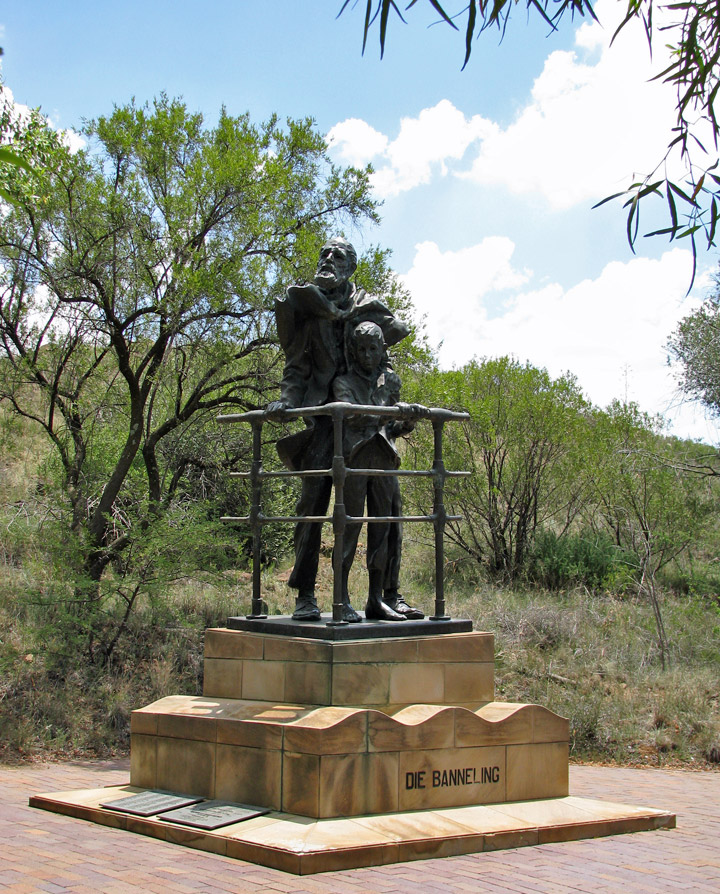
memorial to those banished to
foreign lands
There were early Boer military successes against the scattered British. The
Boers were able to besiege the towns of Mafeking (defended by troops headed by
Colonel Robert Baden-Powell), and Kimberley (defended by troops headed by Lt-Col
Kekewich) on the borders of the Transvaal. The major British concentration was
in northern Natal under Sir George White. White's troops, who were dangerously
dispersed, were defeated separately, and were besieged in Ladysmith.
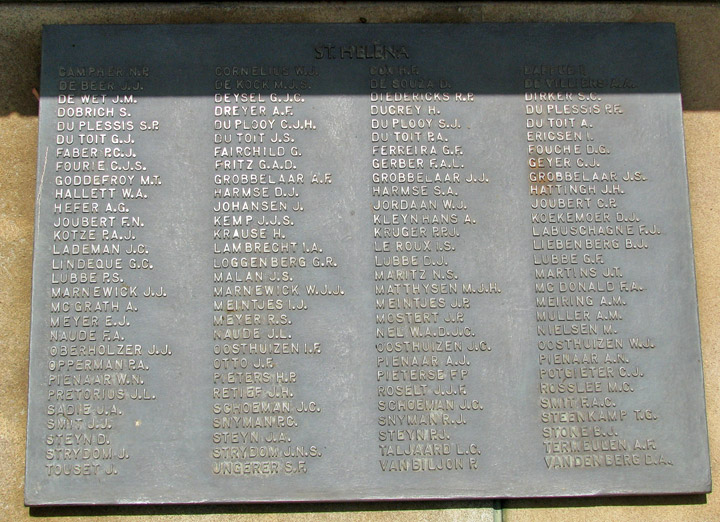
those sent to St. Helena
an Island in the Atlantic Ocean
Siege life took its toll on both the defending soldiers and the civilians in the
cities of Mafeking, Ladysmith, and Kimberley as food began to grow scarce after
a few weeks. In Mafeking, Sol Plaatje wrote, "I saw horseflesh for the first
time being treated as a human foodstuff." The cities under siege also dealt with
constant artillery bombardment, making the streets a dangerous place. Near the
end of the siege of Kimberley, it was expected that the Boers would intensify
their bombardment, so a notice was displayed encouraging people to go down into
the mines for protection. The townspeople panicked, and people flowed into the
mineshafts constantly for a 12-hour period. Although the bombardment never came,
this did nothing to diminish the distress of the civilians. Many of the
townspeople, now under siege, sheltered in the local convent, now the Mcgregor
museum. Since the mining that occurred there, for diamonds, was open air, the
people were not able to shelter in mine shafts. The mine is now known as the Big
Hole, a popular tourist attraction in the area.
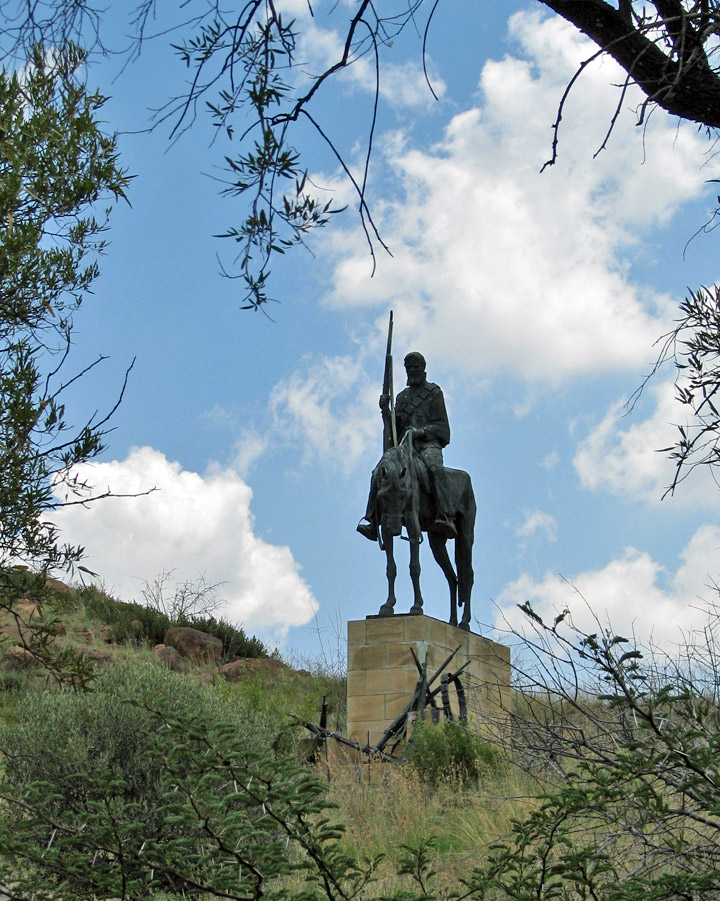
Major British reinforcements were arriving under General Redvers Henry Buller.
He originally intended an offensive straight up the railway line leading from
Cape Town through Bloemfontein to Pretoria. Finding on arrival that the British
troops already in South Africa were under siege, he split his Army Corps into
several widely spread detachments, to relieve the besieged garrisons.
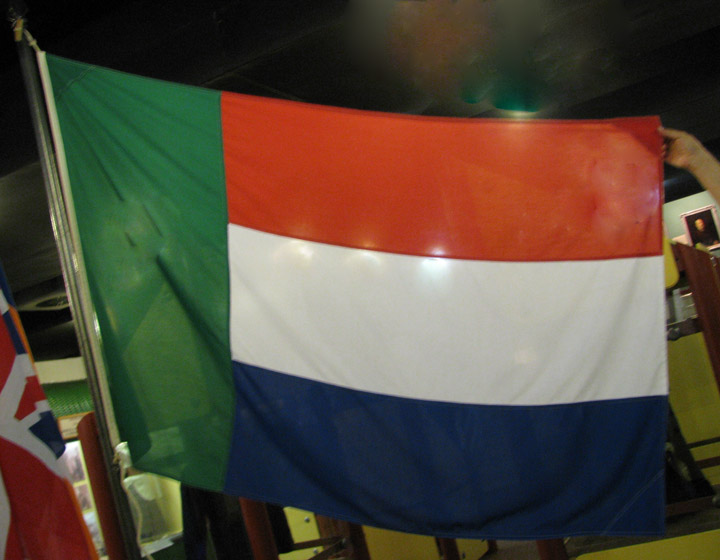
flag of the Transvaal
British commanders had trained on the lessons of the Crimean War, and could
adapt themselves to battalion and regimental columns manoeuvring in jungles,
deserts and mountainous regions; what they entirely failed to comprehend was the
trench fighting and cavalry raids of the American Civil War. The British troops
went to war with what would prove to be antiquated tactics, and in some cases
antiquated weapons, against the mobile Boer forces with the destructive fire
of their modern Mausers, the latest Krupp field guns and their innovative
tactics.
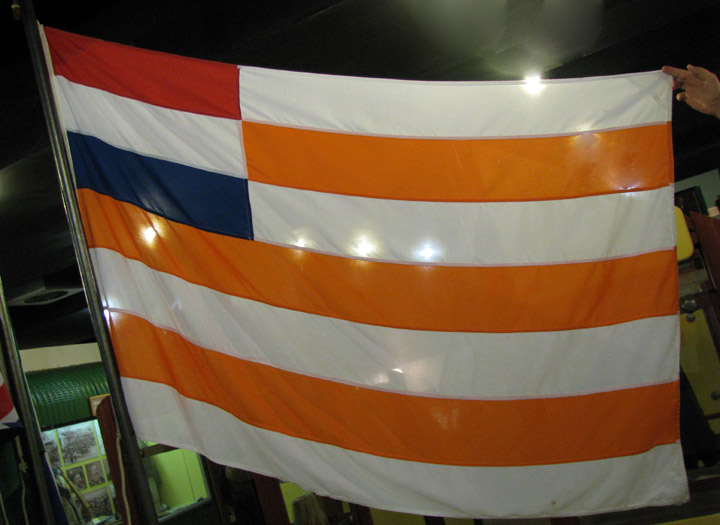
flag of the Orange Free State
The middle of December was disastrous for the British army. In a period known as
Black Week (10 – 15 December 1899), the British suffered a series of devastating
losses at Magersfontein, Stormberg, and Colenso.
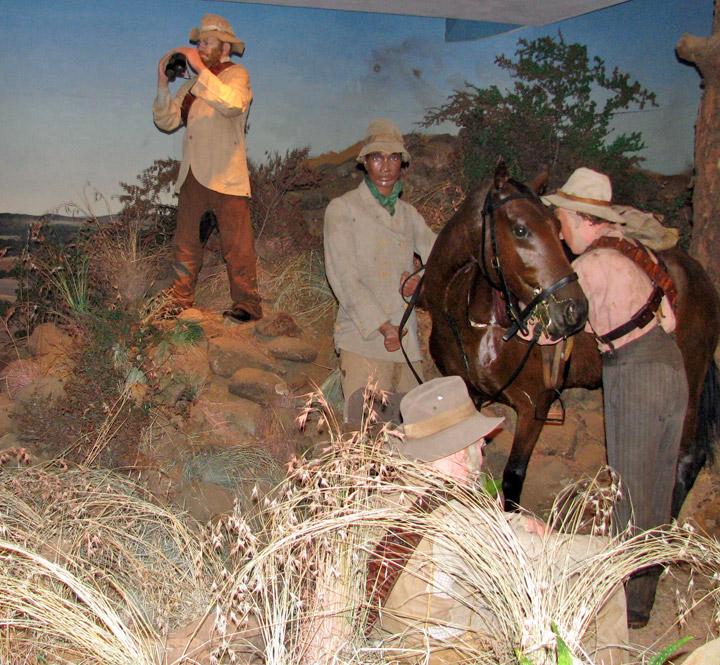
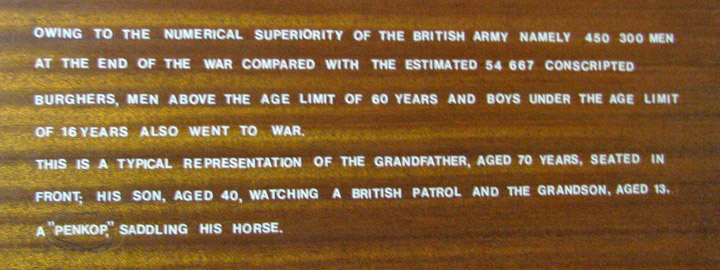
At the Battle of Stormberg on 10 December, British General Sir William Gatacre,
who was in command of 3,000 troops protecting against Boer raids in Cape Colony,
tried to recapture a railway junction about 50 miles (80 km) south of the Orange
River. But Gatacre chose to assault the Orange Free State Boer positions
surmounting a precipitous rock face in which he lost 135 killed and wounded, as
well as two guns and over 600 troops captured.

battle scene
At the Battle of Magersfontein on 11 December, 14,000 British troops, under the
command of Lieutenant-General Lord Methuen, attempted to fight their way to
relieve Kimberley. The Boer commanders, Koos de la Rey and Piet Cronje, devised
a plan to dig trenches in an unconventional place to fool the British and to
give their riflemen a greater firing range. The plan worked and this tactic
helped write the doctrine of the supremacy of the defensive position, using
modern small arms and trench fortifications. At Magersfontein, the British
were decisively defeated, suffering the loss of 120 British soldiers killed and
690 wounded, which prevented them from relieving Kimberley and Mafeking.

"Such was the day for our regiment
Dread the revenge we will take.
Dearly we paid for the blunder -
A drawing-room General’s mistake.
Why weren’t we told of the trenches?
Why weren’t we told of the wire?
Why were we marched up in column,
May Tommy Atkins enquire…."
From the "Battle of Magersfontein," verse by Private Smith of the Black Watch
December 1899. Quoted in, ‘Thomas Pakenham’s "The Boer War," page 115.
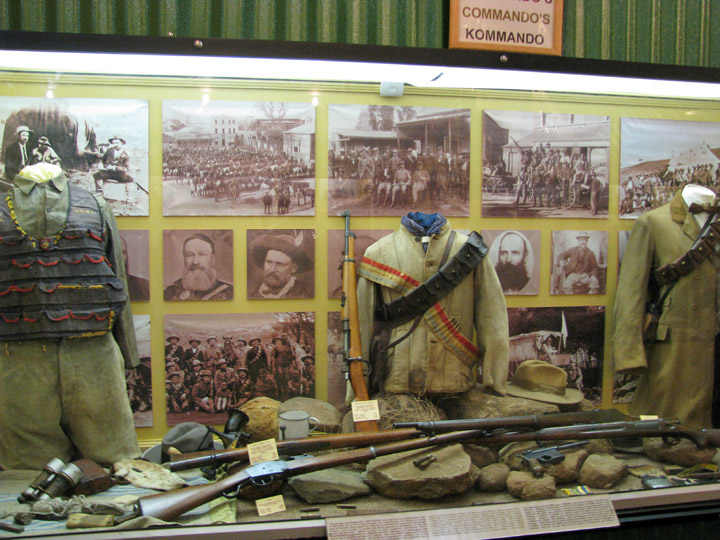
But the nadir of Black Week was the Battle of Colenso on 15 December where
21,000 British troops commanded by Buller himself, attempted to cross the Tugela
River to relieve Ladysmith where 8,000 Transvaal Boers, under the command of
Louis Botha, were awaiting them. Through a combination of artillery and accurate
rifle fire, the Boers repelled all British attempts to cross the river. The
British had a further 1,126 casualties, and lost 10 artillery pieces to the
Boers during the ensuing retreat. The Boer forces suffered 40 casualties.
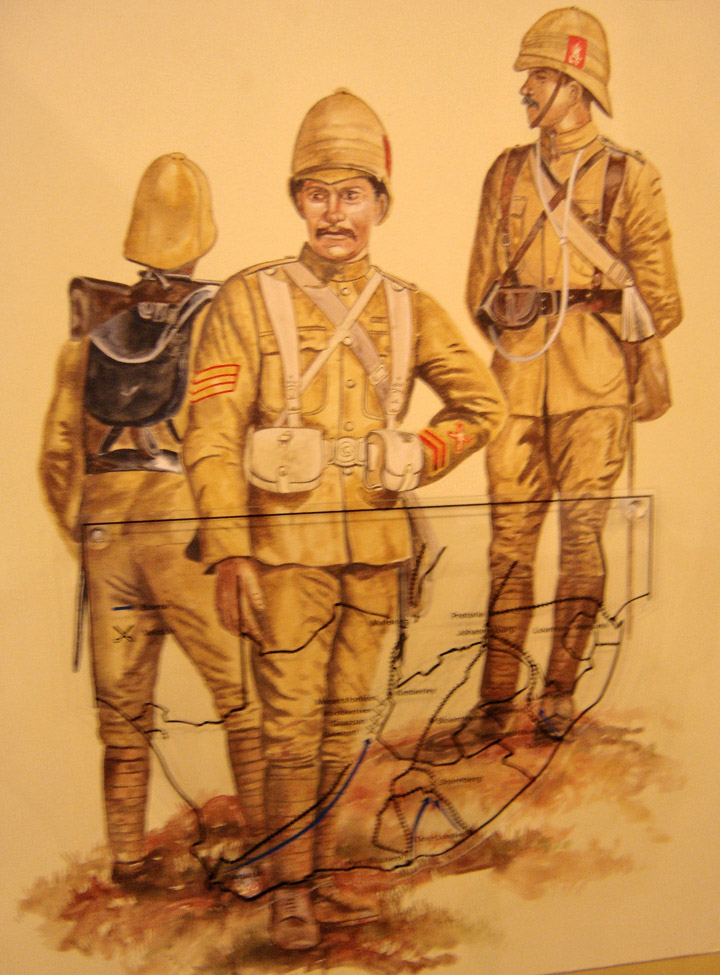
British forces
The British suffered further defeats in their attempts to relieve Ladysmith at
the Battle of Spion Kop of 19 to 24 January 1900, where Buller again attempted
to cross the Tugela west of Colenso and was defeated again by Louis Botha after
a hard-fought battle for a prominent hill feature which resulted in a further
1,000 British casualties and nearly 300 Boer casualties. Buller attacked Botha
again on 5 February at Vaal Krantz and was again defeated.
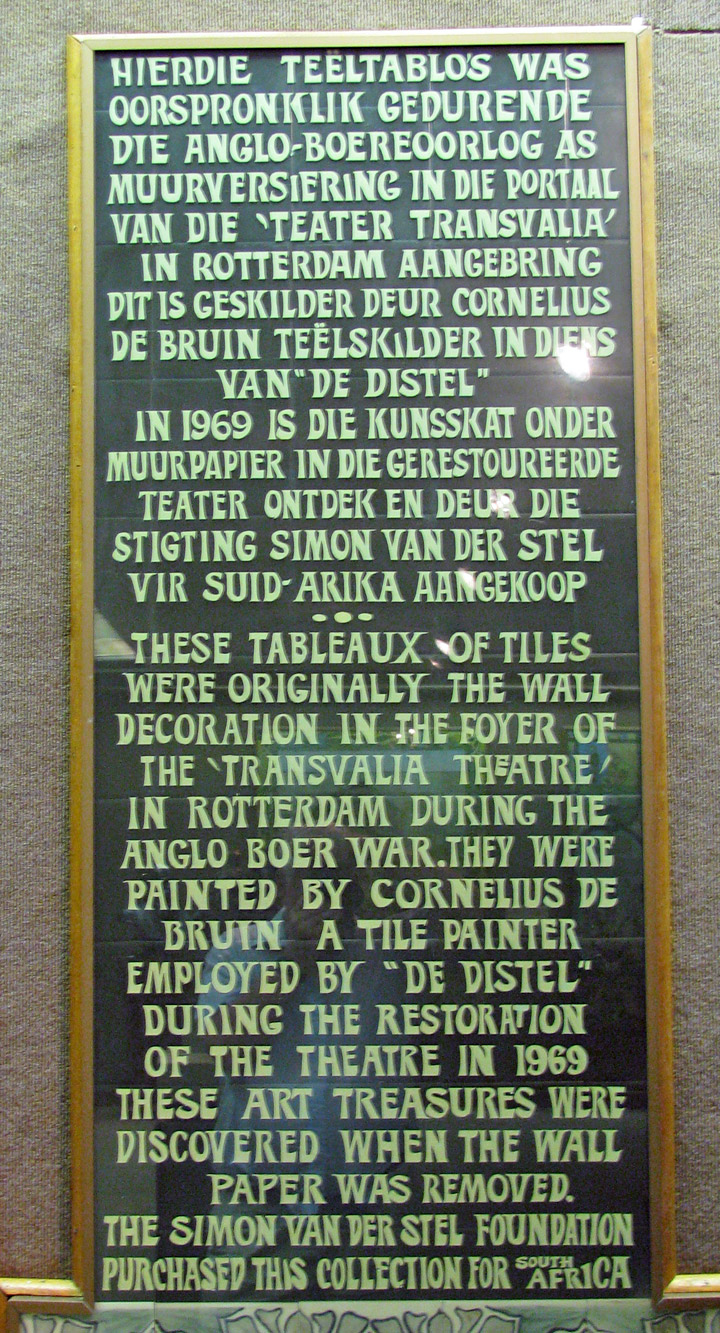
By taking command in person in Natal, Buller allowed the overall direction of
the war to drift. Because of concerns about his performance and negative reports
from the field, he was replaced as Commander in Chief by Field Marshal Lord
Roberts. Roberts first intended like Buller to attack directly along the Cape
Town - Pretoria railway but, again like Buller, was forced to relieve the
beleaguered garrisons. Leaving Buller in command in Natal, Roberts massed
further reinforcements near the Orange River and on 14 February 1900, he
launched a major attack to relieve Kimberley. The city was relieved on 15
February by a cavalry division under Lieutenant General John French. At the
Battle of Paardeberg on 18 February to 27 February 1900, Roberts then surrounded
General Piet Cronje's retreating Boer army, and forced him to surrender with
4000 men after a siege lasting a week. Meanwhile, Buller at last succeeded in
forcing a crossing of the Tugela, and defeated Botha's outnumbered forces north
of Colenso, allowing the Relief of Ladysmith the day after Cronje surrendered.

Roberts then advanced into the Orange Free State from the west, capturing
Bloemfontein, the capital, on March 13. Meanwhile, he detached a small force to
relieve Baden-Powell, and the Relief of Mafeking on May 18, 1900 provoked
riotous celebrations in Britain.
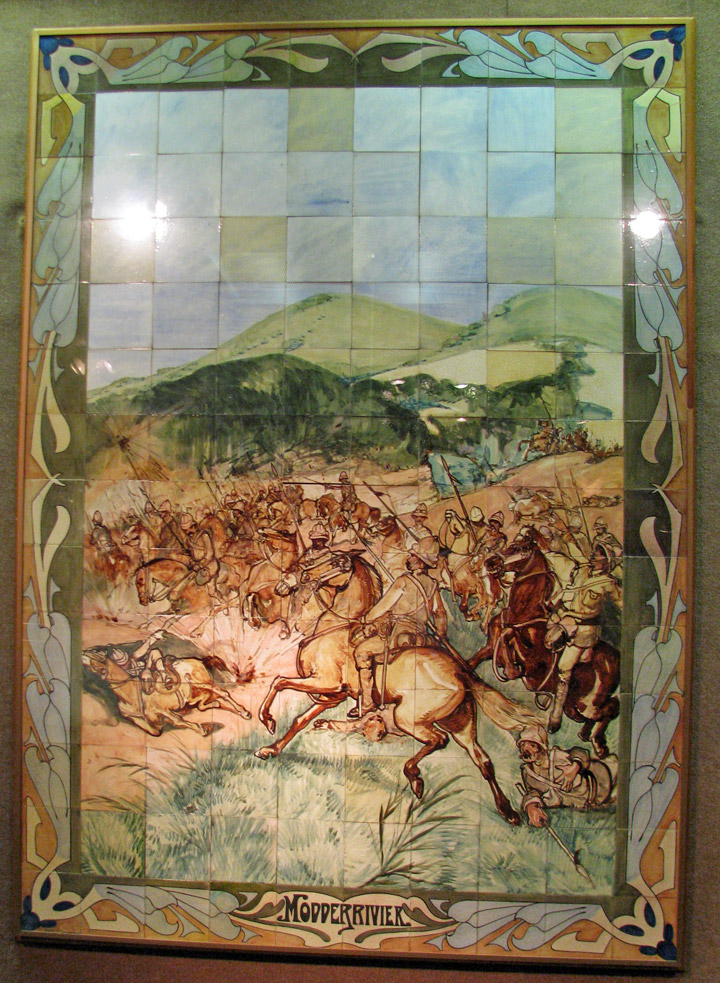
After being forced to delay for several weeks at Bloemfontein due to shortage of
supplies and enteric fever (caused by poor hygiene, drinking bad water at
Paardeburg and appalling medical care), Roberts resumed his advance. He was
forced to halt again at Kroonstad for 10 days, due once again to the collapse of
his medical and supply systems, then finally captured Johannesburg on May 31 and
the capital of the Transvaal, Pretoria, on June 5. (Before the war, the Boers
had constructed several forts south of Pretoria, but the artillery had been
removed from the forts for use in the field, and in the event the Boers
abandoned Pretoria without a fight.)
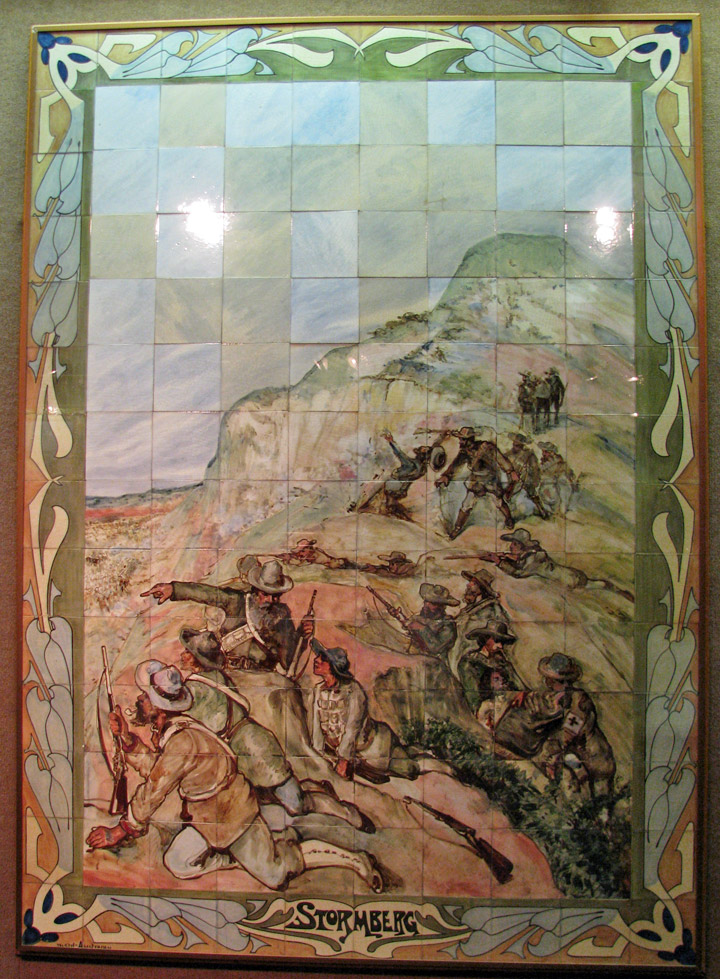
British observers believed the war to be all but over after the capture of the
two capital cities. However, the Boers had earlier met at the temporary new
capital of the Orange Free State, Kroonstad, and planned a guerrilla campaign to
hit the British supply and communication lines. The first engagement of this new
form of warfare was at Sanna's Post on 31 March where 1,500 Boers under the
command of Christiaan De Wet attacked Bloemfontein's waterworks about 23 miles
(37 km) east of the city, and ambushed a heavily escorted convoy which resulted
in 155 British casualties and the capture of seven guns, 117 wagons and 428
British troops.
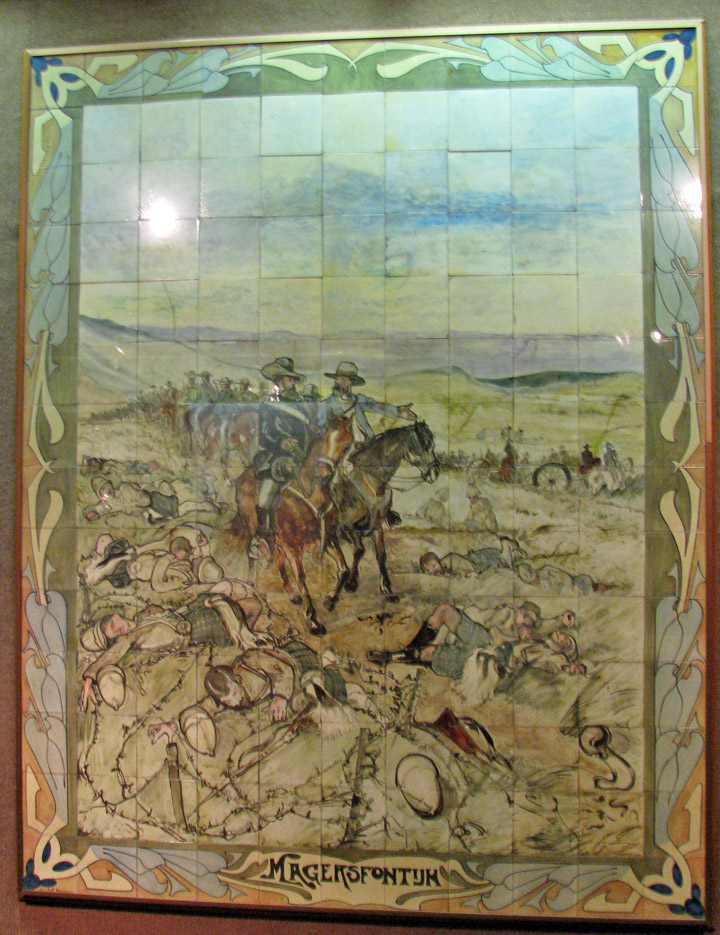
After the fall of Pretoria, one of the last formal battles was at Diamond Hill
on 11 – 12 June, where Roberts attempted to drive the remnants of the Boer field
army beyond striking distance of Pretoria. Although Roberts drove the Boers from
the hill, the Boer commander, Louis Botha, did not regard it as a defeat, for he
inflicted more casualties on the British (totalling 162 men) while suffering
around 50 casualties.
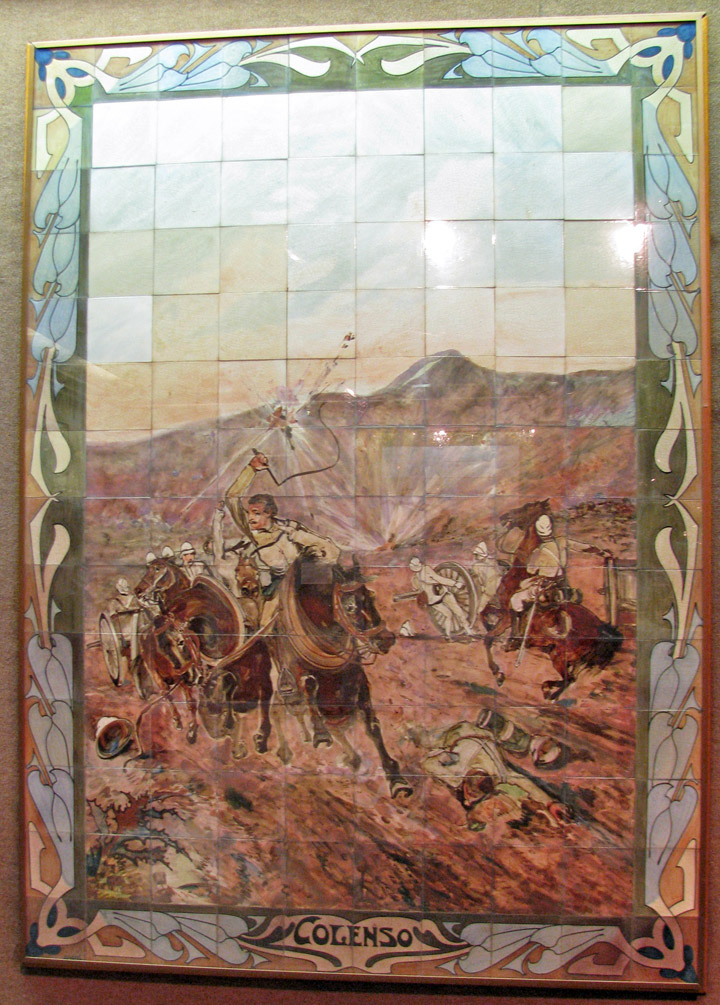
The set-piece period of the war now largely gave way to a mobile guerrilla war,
but one final operation remained. President Kruger and what remained of the
Transvaal government had retreated to eastern Transvaal. Roberts, joined by
troops from Natal under Buller, advanced against them, and broke their last
defensive position at Bergendal on August 26. As Roberts and Buller followed up
along the railway line to Komatipoort, Kruger sought asylum in Portuguese East
Africa (modern Mozambique). Some dispirited Boers did likewise, and the British
gathered up much war material. However, the core of the Boer fighters under
Botha easily broke back through the Drakensberg mountains into the Transvaal
highveld after riding north through the bushveld. Under the new conditions of
the war, heavy equipment was no use to them, and therefore no great loss.

In October, President Kruger and members of the Transvaal government left South
Africa on the Dutch warship De Gelderland, sent by the Queen of the Netherlands
Wilhelmina, which had simply ignored the British naval blockade of South Africa.
Paul Kruger's wife was too ill to travel and remained in South Africa where she
died on 20 July 1901 without seeing Paul Kruger again. President Kruger went to
first Marseille and then stayed for a while in The Netherlands, before moving to
Clarens, Switzerland, where he died in exile on 14 July 1904.
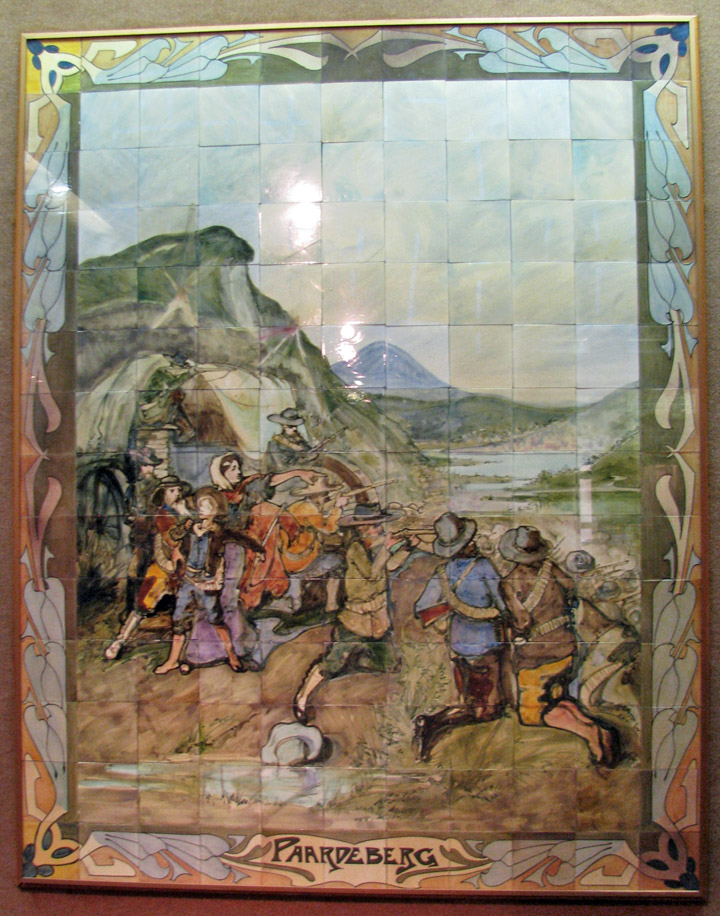
By September 1900, the British were nominally in control of both Republics, with
the exception of the northern part of Transvaal. However, they discovered that
they only controlled the ground their columns physically occupied. The Boer
commanders adopted a guerrilla style of warfare. The Boer commandos were sent to
their own districts where they had local support and the knowledge of the
terrain, towns and district and could live off the land. Their orders were
simply to act against the British whenever possible. Their strategy was to
strike fast and hard causing as much damage to the enemy as possible, and then
to withdraw and vanish before enemy reinforcements could arrive. The vast
distances of the Republics allowed the Boer commandos considerable freedom to
move about and made it impossible for the 250,000 British troops to control the
territory effectively using columns alone. As soon as the British columns left a
town or district, British control of that area faded away.
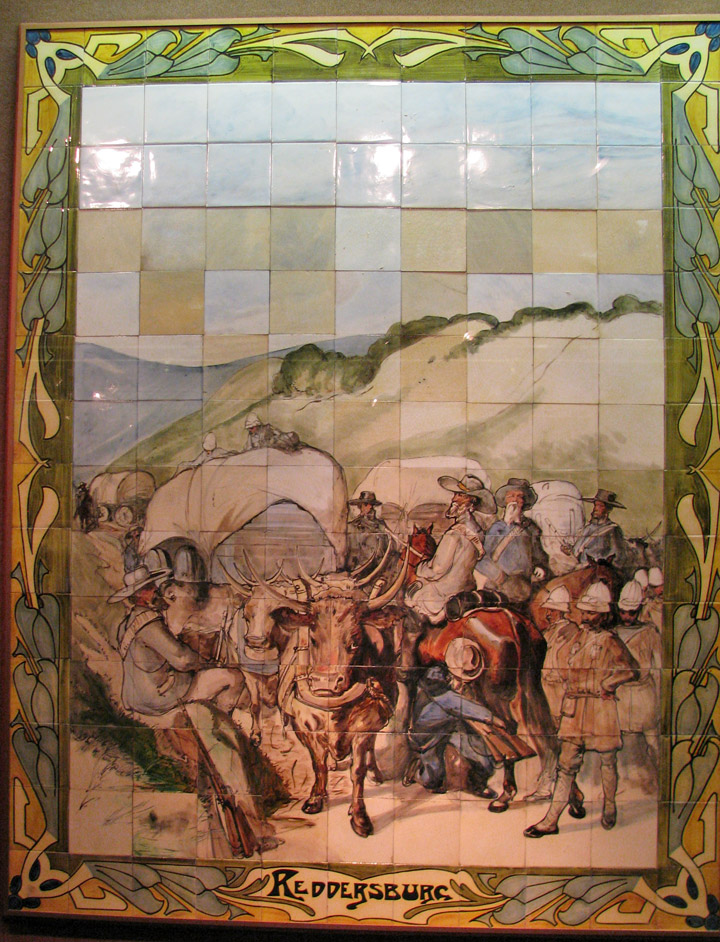
The Boers were especially effective during the initial guerrilla phase of the
war because Roberts had assumed that the war would end with the capture of the
Boer capitals and the dispersal of the main Boer armies. Many British troops
were redeployed, and replaced by lower-quality contingents of Imperial Yeomanry
and locally-raised irregular corps.
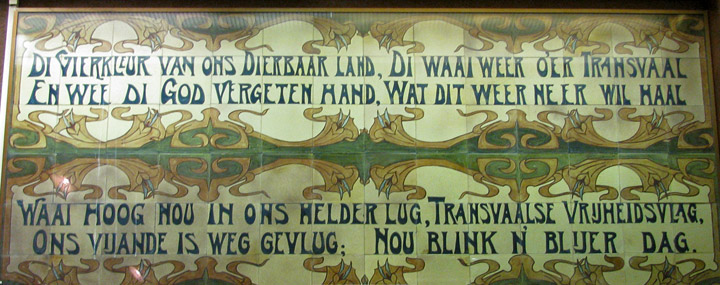
However, the British quickly revised their tactics. The British had first
erected lines of fortified blockhouses to protect the railway lines. They now
built fresh lines of these and linked them by barbed wire fences, to parcel up
the wide veld into smaller areas to prevent free Boer movement across the veld.
The controlled areas could be regularly swept and "New Model" drives were
mounted under which a continuous line of troops would now effectively sweep an
area of veld bounded by blockhouse lines, unlike the earlier inefficient
scouring of the countryside by scattered columns. The British also targeted
everything that could give sustenance to the guerrillas under their "Scorched
Earth" policy making it harder and harder for the Boers to survive. British
troops swept the countryside, interning women and children in concentration
camps, destroying crops, burning down homesteads and farms, poisoning wells, and
salting fields. They also established their own mounted raiding columns to
follow and relentlessly harass the Boers, and utilised armoured trains to
deliver rapid reaction forces in response to intelligence of Boer activity.
Text from Wikipedia
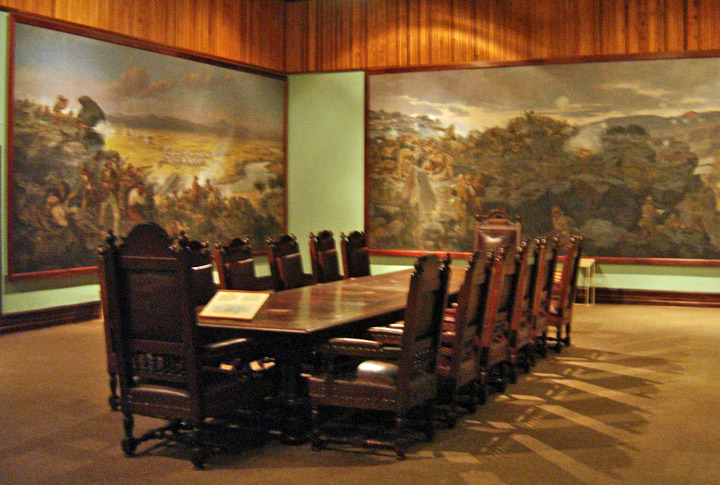
Table used during the Bloemfontein
Conference (31 May 1899 - 5 June 1899)
Concentration Camps
In early March 1901 Lord Kitchener
decided to break the stalemate that the extremely costly war had settled into.
It was costing the British taxpayer 2,5 million pounds a month. He decided to
sweep the country bare of everything that can give sustenance to the Boers i.e.
cattle, sheep, horses, women and children.
Scorched Earth Policy

homes being burned
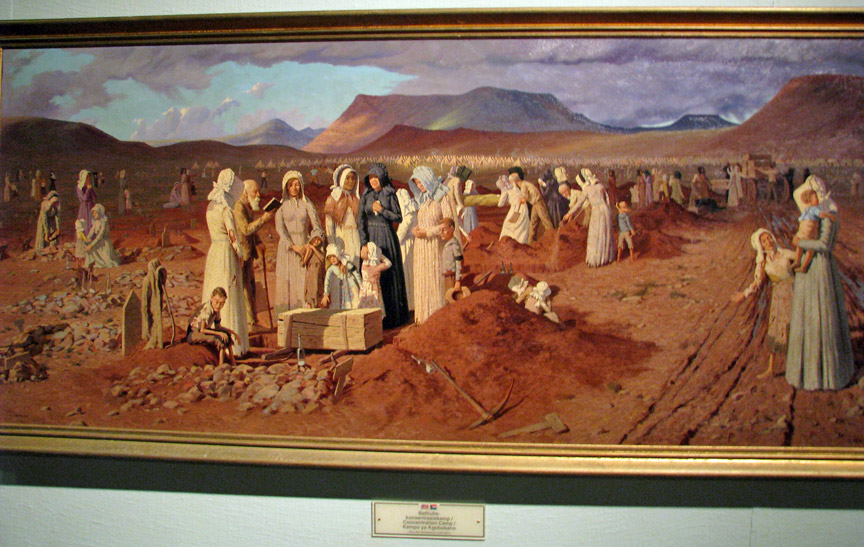
sent to concentration camps
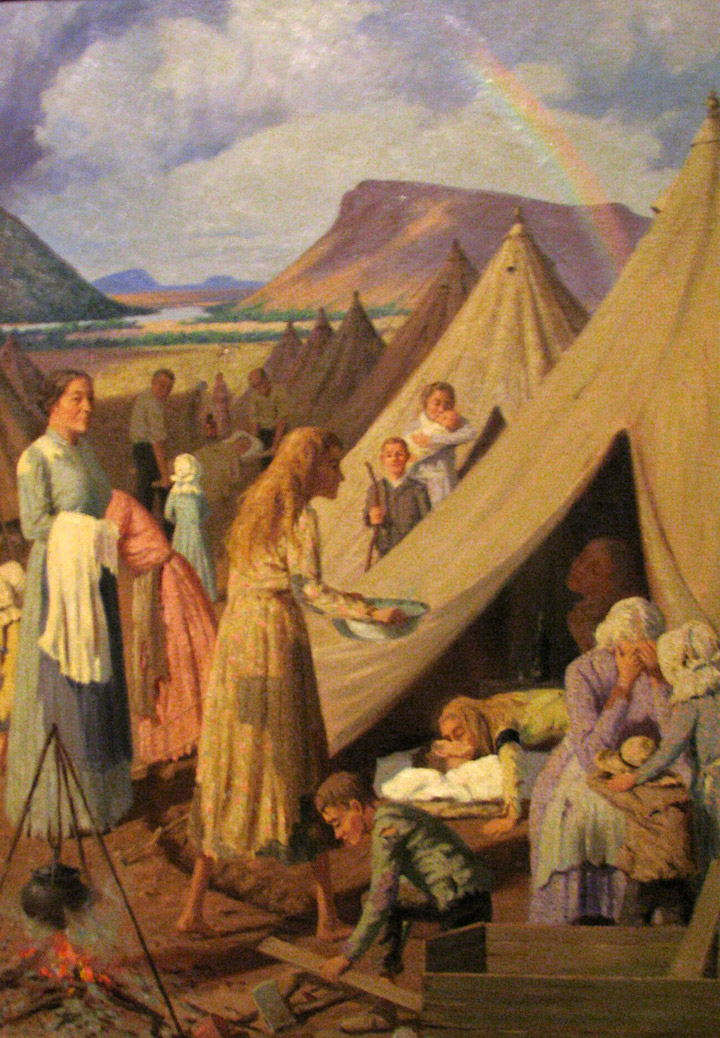
The W H Coetzer triptych depicting the Scorch Earth policy - War
Museum of the Boer Republics
This scorched earth policy led to the destruction of about 30000
Boer farmhouses and the partial and complete destruction of more than forty
towns.. Thousands of women and children were removed from their homes by force.
They had little or no time to remove valuables before the house was burnt down.
They were then taken by ox wagon or in open cattle trucks to the nearest camp.
Conditions in the camps were less than ideal. Tents were overcrowded.
Reduced-scale army rations were provided. In fact there were two scales. Meat
was not included in the rations issued to women and children whose men folk were
still fighting. There were little or no vegetables, no fresh milk for the babies
and children, 3/4 lb of either mealie meal, rice or potatoes, 1 lb of meat twice
weekly, I oz of coffee daily, sugar 2 oz daily, and salt 0,5 oz daily (this was
for adults and children who had family members on commando).
Text from
Anglo-Boer War Museum web site


































People and
Places














































































